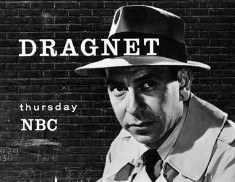Dave Leigh stands up for Gene Roddenberry:
… the most infamous case is in part a running gag throughout the series. It’s dictated in the Guide, runs the length of the series, and culminates in the final episode. And I’m pretty sure that very few people other than Gene Roddenberry himself knew that it was a running gag.
It’s sexism.
First… history. And this part is well-known. When the first pilot (“The Cage”) was delivered, Roddenberry cast his future wife, Majel Barrett, as “Number One”, the coldly logical second-in-command of the Enterprise. When the studio rejected that pilot and commissioned a second one, they made a few demands. They wanted to “get rid of the guy with the ears” (as Roddenberry told it). They also wanted to axe Number One, because they claimed that their test audiences didn’t like a woman as executive officer. For decades, Roddenberry told the joke that he kept the alien and married the woman because the other way ’round wouldn’t be legal. He also transferred Number One’s coldly logical nature to Mister Spock.
In the years that followed, many fans and critics completely forgot this story when examining the rest of the series. For instance, there’s the fact that the captain’s yeoman is always a pretty female. This is by decree. In fact, the Guide describes the character as follows:
YEOMAN — Played by a succession of young actresses, always lovely. One such character has been well established in the first year, “YEOMAN JANICE RAND”, played by the lovely Grace Lee Whitney. Whether Yeoman Rand or a new character provided by the writer, this female Yeoman serves Kirk as his combination Executive Secretary-Valet-Military Aide. As such, she is always capable, a highly professional career girl. As with all female Crewman aboard, during duty hours she is treated co-equal with males of the same rank, and the same level of efficient performance is expected. The Yeoman often carries a small over-the-shoulder case, a TRICORDER, about the size of a small handbag, which is also an electronic recorder-camera-sensor combination, immediately available to the Captain should he be away from his Command Console.
In the real-world Navy, a yeoman is simply a clerk. Most of them are men. But in Star Fleet, this is women’s work, at least superficially. Note that in other respects these women were to be treated co-equally. What isn’t women’s work — ever (in the original series) — is the Captaincy. And this is stated explicitly in the very last episode of the series, “The Turnabout Intruder”.
Now, this has been retconned over and over, but this episode was deliberate, and it was conceived and outlined by Gene Roddenberry. By now you probably know that I don’t like retcons because they suck. They’re poor explanations that say, “it didn’t happen”. It’s better to explain why it did happen. And to do that, we have to start with an understanding of what Star Trek was for. It was first and foremost a platform for storytelling. Fantastic elements were readily employed whenever they served a storytelling need. It’s one of the strengths of science fiction:
“I was working in a medium, television, which is heavily censored, and in contemporary shows I found I couldn’t talk about sex, religion, politics and all or the other things I wanted to talk about. It seemed to me that if I had things happen to little polka-dotted people on a far-off planet I might get past the network censors, as Swift did in his day. And indeed that’s what we did.”
— Gene Roddenberry



 If you’re fifty or older, you won’t need to be told the source of these half-recalled phrases: “The story you are about to see is true.” “This is the city.” “I carry a badge.” “My name’s Friday.” If you’re much younger than that, though, I doubt that you’ll remember Dragnet with any clarity. In the early days of network television, Dragnet was the most successful of all cops-and-robbers TV shows, as well as the most influential. It’s still influential — every episode of Law and Order bears its indelible stamp — but TV has since moved in flashier directions, and I doubt that the narrative conventions brought into being by Jack Webb, the director, producer, and star of Dragnet, will remain conventional for much longer.
If you’re fifty or older, you won’t need to be told the source of these half-recalled phrases: “The story you are about to see is true.” “This is the city.” “I carry a badge.” “My name’s Friday.” If you’re much younger than that, though, I doubt that you’ll remember Dragnet with any clarity. In the early days of network television, Dragnet was the most successful of all cops-and-robbers TV shows, as well as the most influential. It’s still influential — every episode of Law and Order bears its indelible stamp — but TV has since moved in flashier directions, and I doubt that the narrative conventions brought into being by Jack Webb, the director, producer, and star of Dragnet, will remain conventional for much longer.


